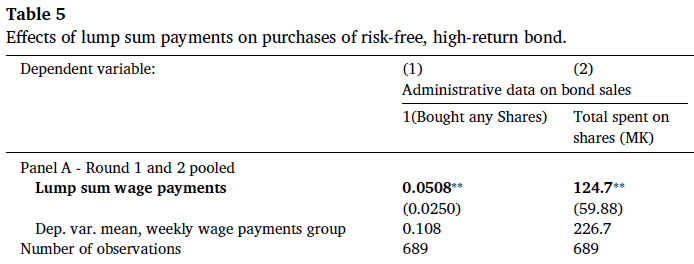Fifteen years ago I was an undergrad physics major, and I had just finished a summer spent teaching schoolchildren in Tanzania about HIV. The trip was both inspiring and demoralizing. I had gotten involved because I knew AIDS was important and thought addressing it was a silver bullet to solve all of sub-Saharan Africa’s problems. I came away from the trip having probably accomplished little, but learned a lot about the tangled constellation of challenges facing Tanzanians. They lacked access to higher education, to power, to running water. AIDS was a big problem, but one of many. And could we do anything about these issues? Most of my courses on international development were at best descriptive and at worst defeatist. There were lots of problems, and colonialism was to blame. Or maybe the oil curse. Or trade policy. It was hard to tell.
Just as I was pondering these problems and what I could do about them, talk began to spread about the incredible work being done by Abhijit Banerjee and Esther Duflo. They had started an organization, J-PAL, that was running actual experiments to study solutions to economic and social problems in the world’s poorest places. At this point, my undergraduate courses still emphasized that economics was not an experimental science. But I started reading about this new movement to change that, in development economics in particular, by using RCTs to test the effects of programs and answer first-order economic questions.
At the same time, I also learned about the work being done by Michael Kremer, another of the architects of the experimental revolution in development economics. One of the first development RCT papers I read remains my all-time favorite economics paper: Ted Miguel and Kremer‘s Worms. This paper has it all. They study a specific & important program, and answer first-order questions in health economics. They use a randomized trial, but their analysis is informed by economic theory: because intestinal worm treatment has positive externalities, you will drastically understate the benefits of treatment if you ignore that in your data analysis. And the results were hugely influential: Deworm the World is now implementing school-based deworming around the world. I was sold: I changed career paths and started pursuing development economics. And I became what is often called a randomista, a researcher focused on using randomized trials to study economic issues and solve policy problems in poor countries. Kremer is in fact my academic grandfather: he advised Rebecca Thornton, who in turn advised me.
When the Nobel Prize in Economics was awarded to Banerjee, Duflo, and Kremer this Monday, a major reason was because of their tremendous influence on hundreds if not thousands of people with stories like mine. Without their influence, the field of development economics would look entirely different. A huge share of us wouldn’t be economists at all, and if we were we would be doing entirely different things. Beyond development economics per se, the RCT revolution spilled over into other fields. We increasingly think of economics as an experimental science (which was the title of my dissertation) – even when we cannot run actual experiments, we think about our data analysis as approximating an experimental ideal. Field experiments have been used in economics for a long time, but this years prize-winners helped make them into the gold standard for empirical work in the field.
They also helped make experiments the gold standard in studying development interventions, and this has been a colossal change in how we try to help the poor. Whereas once policymakers and donors had to be convinced by researchers that rigorous impact evaluations were important, now they actually seek out research partners to study their ideas. This has meant that we increasingly know what actually works in development, and even more important, what doesn’t work. We can rigorously show that many silver bullets aren’t so shiny after all – for example, additional expansions of microcredit do not transform the lives of the poor.
What is particularly striking and praiseworthy about this award is how early it came. There was a consensus that this trio would win a Nobel prize at some point, but these awards tend to be handed out well after the fact, once time has made researchers’ impact on the field clearer. It is a testament to their tremendous impact on the field of economics that it was already obvious that Duflo, Banerjee, and Kremer were worthy of the Nobel prize, and a credit to the committee that they saw fit to recognize the contributions so quickly. I think it’s fitting that Duflo is now the youngest person ever to win a Nobel prize in economics – given her influence on the field, it’s hard to believe she is just 46 years old.






